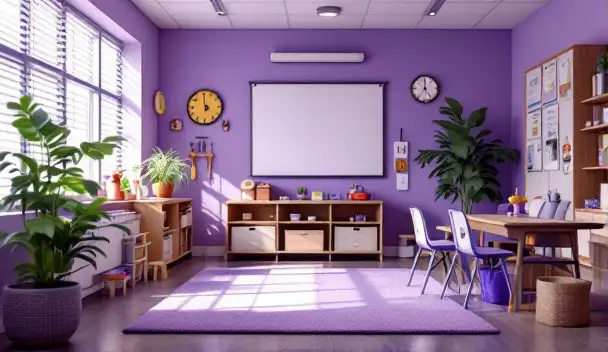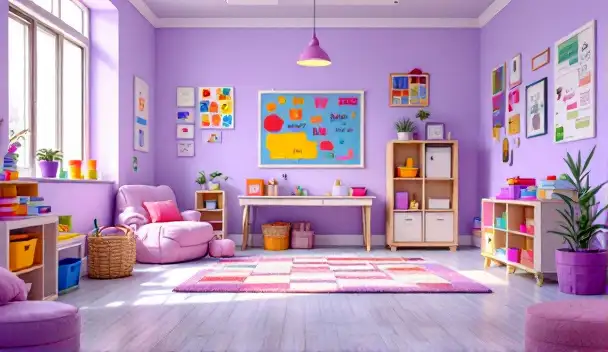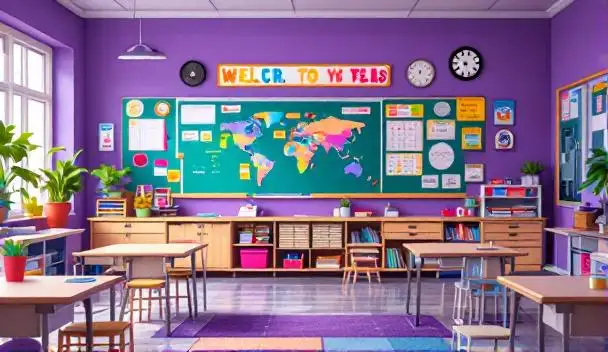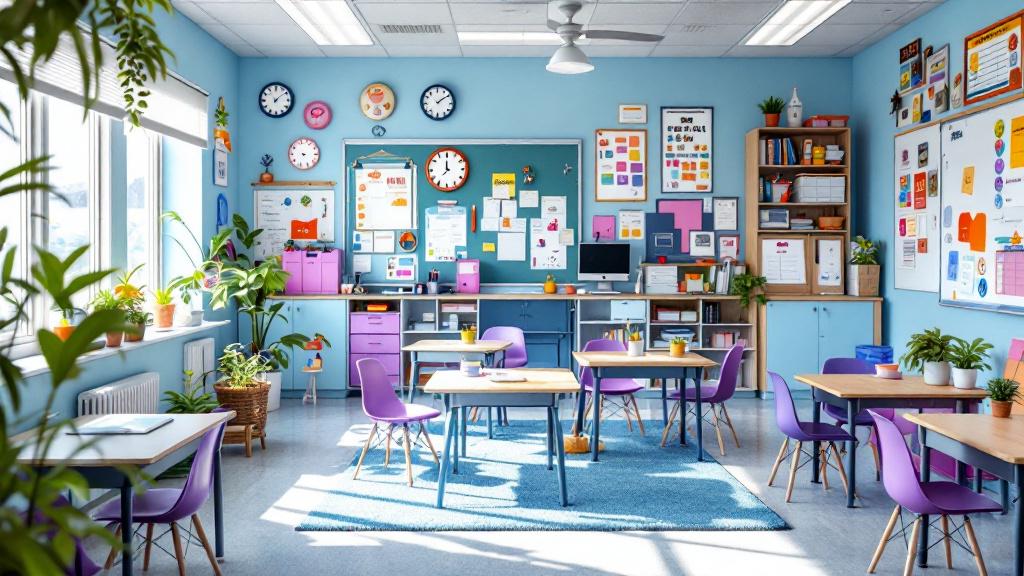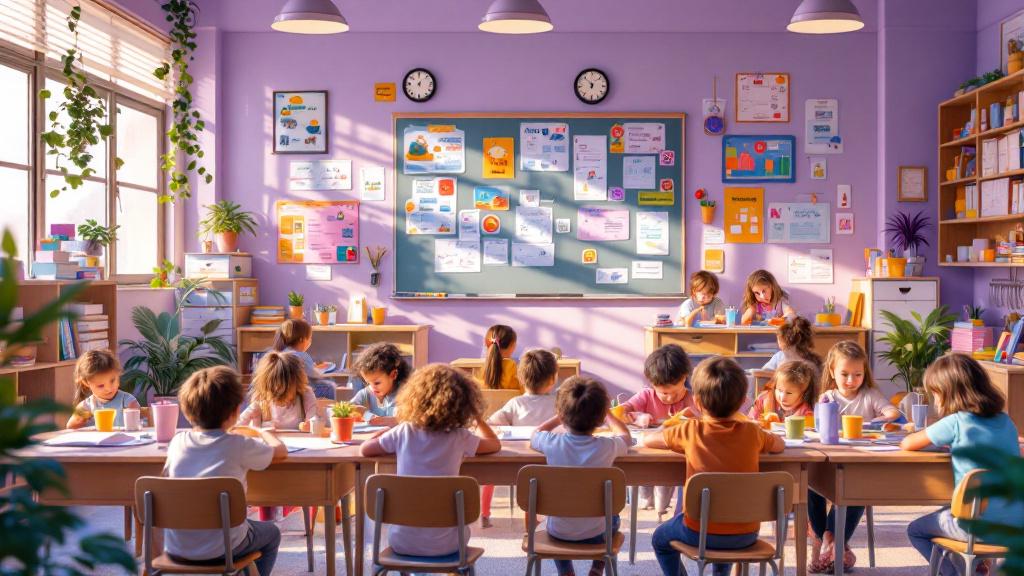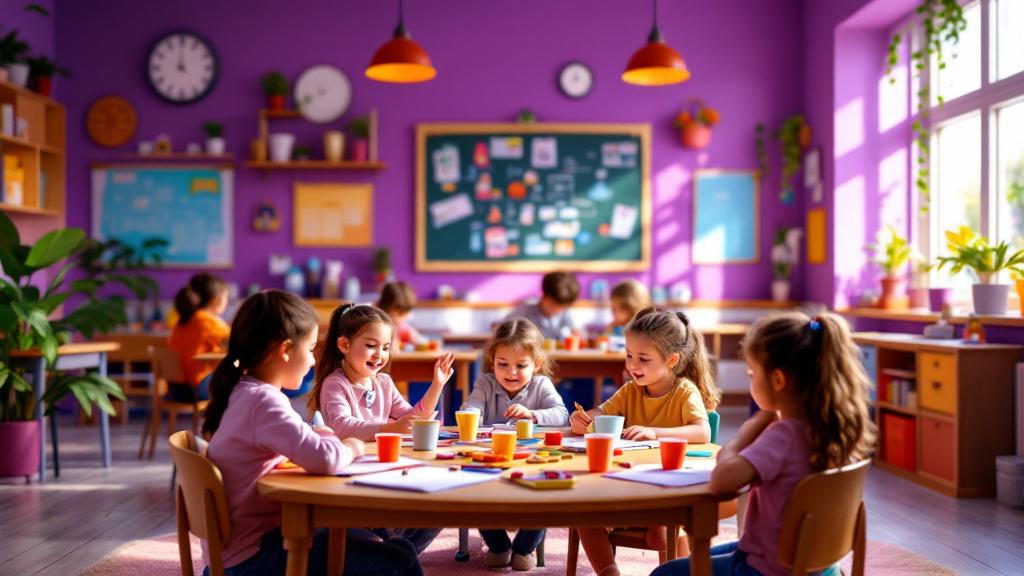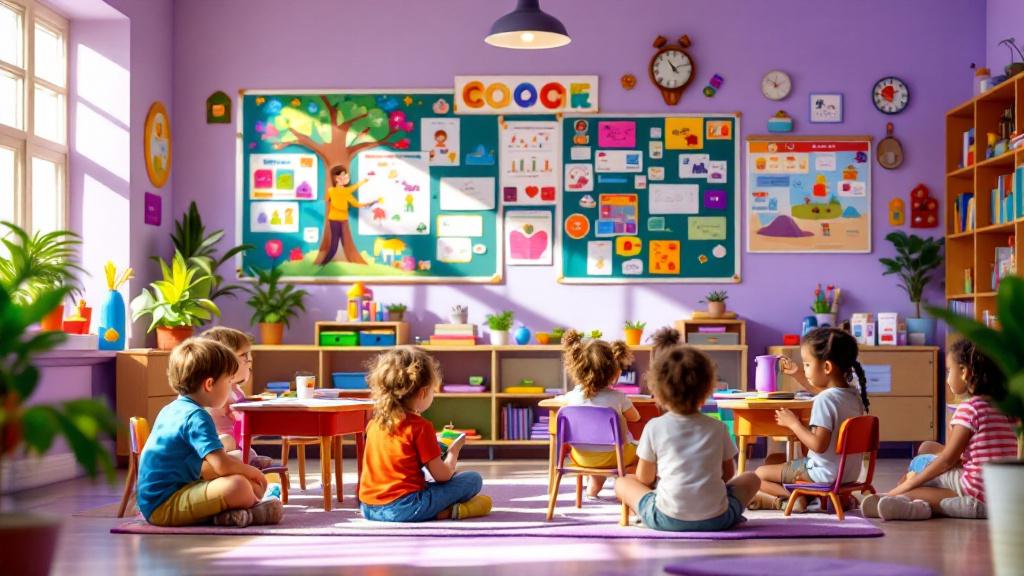Exploring the Benefits of Home-Based ABA Therapy
Applied Behavior Analysis (ABA) therapy is a powerful tool used to support children with autism by enhancing their social, communication, and daily living skills. When conducted at home, ABA therapy not only allows children to learn in a familiar environment but also effectively promotes the generalization of skills to real-life situations. This article delves into the unique benefits and strategies of home-based ABA therapy, shedding light on its role in helping children with autism apply their learned skills in everyday settings.
Understanding ABA Therapy and Its Role in Autism

What is ABA therapy and how does it help children with autism?
Applied Behavior Analysis (ABA) therapy is a scientifically proven intervention designed to modify behaviors in children with autism. It focuses on enhancing essential skills such as social interactions, communication, and daily living tasks through structured techniques. By employing positive reinforcement, ABA therapy encourages desirable behaviors while simultaneously reducing harmful or maladaptive ones.
One of the notable strengths of ABA therapy is its adaptability. It can be customized to meet the unique needs of each child and is effective in various settings—home, school, or therapy centers. Studies have shown that with early and intensive ABA interventions, children often show significant improvements in communication skills and socialization, allowing them to integrate more successfully into mainstream classrooms.
Why is parental involvement important in ABA therapy?
The role of parents and caregivers in ABA therapy cannot be overstated. Their active involvement is crucial as they learn to implement behavioral strategies in everyday situations. This practice not only reinforces skills taught during therapy but also fosters independence in children, enhancing their overall quality of life. Through techniques such as modeling and positive reinforcement, parents can create a consistent learning environment at home, which supports the generalization of skills across different settings and situations.
Moreover, in-home ABA therapy allows for real-life applications of skills in a familiar environment, where children feel more comfortable and secure. This setting promotes skill retention and encourages children to engage more fully in the therapy process, ultimately leading to better outcomes and development.
Techniques Utilized in Home-Based ABA Therapy

What methods or techniques are used in home-based ABA therapy?
Home-based ABA therapy employs a variety of methods and techniques tailored to support children with autism effectively. Some prominent methods include:
- Discrete Trial Training (DTT): Breaks skills down into smaller, manageable steps, enhancing mastery.
- Natural Environment Teaching (NET): Utilizes everyday situations for teaching, making learning more relevant.
- Pivotal Response Training (PRT): Focuses on teaching pivotal skills that enhance overall functioning.
- Functional Communication Training (FCT): Empowers children to express needs and feelings effectively.
Techniques for facilitating learning
In addition to these methods, several techniques facilitate learning in home-based settings:
- Prompting: Encourages skill use by providing cues.
- Shaping: Gradually reinforces closer approximations to the desired behavior.
- Task analysis: Breaks down tasks into individual, teachable components.
- Visual supports: Aids comprehension and following instructions.
Role of positive reinforcement
Positive reinforcement is integral to ABA therapy, where children receive rewards for displaying desired behaviors. This not only motivates them but also solidifies learning, helping them to engage with and implement skills in a variety of real-life contexts. The collaborative approach involving parents ensures consistency, allowing for a more cohesive learning experience.
Comparing Home-Based and Center-Based ABA Therapy

How does home-based ABA therapy differ from center-based therapy?
Home-based ABA therapy is tailored to a child’s natural environment, which fosters a comfortable and personalized setting for learning. This method encourages skill generalization as children practice what they learn in their daily lives, allowing them to integrate these skills more effectively. Greater family involvement is another significant aspect of home-based therapy, as parents and siblings can actively engage in the sessions and help reinforce skills during everyday routines.
In contrast, center-based therapy offers a structured environment, often staffed with a team of professionals. This setting can be particularly beneficial for social skills development, as children interact with peers and receive focused attention in a distraction-free zone. While both methods have their advantages, home-based therapy may better suit children with severe symptoms or those needing basic skill acquisition. Center-based options may be preferred for more social interaction.
What are the benefits of family involvement?
Family involvement is a cornerstone of successful ABA therapy, particularly when conducted at home. This active participation of parents not only reinforces learning but also promotes consistency in behavior management and daily routines. With techniques such as positive reinforcement, caregivers can encourage desired behaviors effectively.
Additionally, involving family members helps to create a supportive environment that nurtures the child’s development. Parents learn practical strategies through Behavioral Skills Training (BST) and can apply these skills regularly, ensuring a more profound impact on the child’s growth. Ultimately, the collaboration between parents and therapists enriches the therapy experience, allowing for immediate application and reinforcement of skills learned in sessions.
| Aspect | Home-Based Therapy | Center-Based Therapy |
|---|---|---|
| Environment | Child’s natural setting | Structured clinic environment |
| Family Involvement | High; parents participate in sessions | Lower; primarily professional staff |
| Focus | Skill generalization in daily life | Structured learning and social skills |
| Ideal for | Children needing foundational skills or severe symptoms | Children needing social engagement |
Personalization of Home-Based ABA Therapy

How can home-based ABA therapy be personalized to fit a child's daily life?
Home-based ABA therapy focuses heavily on integrating therapeutic practices into children's daily routines. This allows children to practice learned skills during familiar activities such as mealtimes, playtime, or even while engaging in household tasks. By embedding therapy into these natural settings, children are more likely to relate their experiences to real life and thereby retain the skills they learn.
Collaboration between therapists and parents is essential for creating individualized treatment plans tailored to each child’s unique needs and goals. These plans ensure that learning opportunities seamlessly fit into everyday activities, enhancing the effectiveness of the therapy. More importantly, this approach encourages the application of skills grown in therapy directly in the child’s home environment.
Increased parental involvement plays a vital role in this personalization process as caregivers learn to reinforce skills in genuine contexts. They can dynamically track their child's progress and adjust strategies as necessary. Technology also supports this process; data feedback, communication apps, and tailored digital resources enable continuous customization of interventions, further maximizing the therapy’s impact on a child's development and independence.
This structured yet adaptable approach makes home-based ABA therapy a valuable resource to support children with autism and their families.
The Essential Role of Parents and Caregivers

What role do parents and caregivers play in home-based ABA therapy?
Parents and caregivers are fundamental to the success of home-based ABA therapy. Their involvement goes beyond mere observation; they reinforce and generalize the skills their children learn during therapy sessions. Training equips them with the tools to implement behavior strategies consistently within daily routines, such as during meals, playtime, and self-care activities.
Active parental engagement fosters a collaborative atmosphere between families and therapists, allowing for the creation of individualized treatment goals that reflect family preferences. This partnership ensures that therapy is not only relevant but also meaningful in the context of everyday life.
When parents implement learned strategies at home, children are more likely to retain and apply these skills across various settings and with different people. This cross-situational practice is crucial for developing independence and practical abilities.
Ultimately, research highlights that children demonstrate better outcomes when their families are actively involved in the therapy process. Through consistent reinforcement and engagement, parents and caregivers can create a supportive environment that nurtures the child's overall development, significantly contributing to effective ABA therapy.
Strategies for Successfully Implementing ABA Therapy at Home
What are some strategies to effectively implement ABA therapy at home?
Effective strategies for implementing ABA therapy at home revolve around creating an environment that encourages learning. A structured setting, free from distractions, can significantly reduce anxiety and enhance focus. This atmosphere enables children to engage more fully with the therapy process.
Positive reinforcement is crucial. Parents should consistently reward desired behaviors promptly, as this encourages repetition and solidifies learning. Immediate praise or tangible rewards can motivate children to engage with new skills and reinforce positive behavior.
Setting clear and achievable goals is another important factor. By breaking down skills into manageable steps, parents can help their children progress steadily without feeling overwhelmed. For instance, teaching personal hygiene can be broken down into individual actions, like brushing teeth step-by-step.
Incorporating visual supports such as charts and schedules can also enhance comprehension. Visual aids help provide predictability, making daily routines easier to adhere to and understand. Regularly updating these supports can keep the child engaged and motivated.
How to monitor progress effectively?
Collaboration with an ABA therapist is essential for adjusting strategies as needed. Regular check-ins can help families assess the effectiveness of their interventions. Using data collection methods to monitor progress enables parents to refine their approach, ensuring the interventions remain effective.
By implementing these strategies, parents can create a supportive environment, making the revolutionary benefits of ABA therapy more accessible in the child's everyday life.
Generalizing Skills to Real-Life Situations: A Key Focus
Importance of skill generalization
Generalization is crucial in Applied Behavior Analysis (ABA) therapy as it allows children to transfer learned skills to various aspects of their lives. By helping children apply their skills across different settings, people, and situations, they can navigate real-world interactions more effectively. Successful generalization ensures that the lessons learned during therapy are meaningful and sustainable, facilitating ongoing development.
Methods to promote generalization
Several methods enhance skill generalization in ABA therapy, including:
- Teaching in Multiple Contexts: Skills are taught in various environments, not just therapy rooms, helping children adapt behaviors to diverse situations.
- Involvement of Caregivers: Actively engaging parents and other family members reinforces learned skills at home, fostering a supportive learning environment.
- Using Various Examples and People: Introducing skills using different stimuli and individuals prevents context-specific learning, which helps in applying skills broadly.
- Gradual Reduction of Prompts: As children gain confidence, prompts are slowly faded, encouraging independent use of skills in natural settings.
Addressing barriers to generalization
Barriers to effective generalization include a lack of variety in teaching conditions or insufficient practice in real-life scenarios. Addressing these issues through methods like Natural Environment Training (NET) can significantly improve transfer. Research has shown that home-based ABA therapy enhances children's abilities to generalize skills effectively because it integrates care into familiar contexts. A study revealed that children involved in tailored home-based programs demonstrated improved functional skills even with less intensive therapy compared to traditional settings, emphasizing the value of personalized approaches.
By implementing these tactics, therapists can empower children to apply what they learn in therapy within various aspects of their daily lives, paving the way for greater independence and confidence.
Conclusion
Home-based ABA therapy presents a valuable and adaptive approach for teaching critical skills to children with autism, fostering independence and enhancing quality of life through the generalization of learned behaviors in real-world contexts. While the choice between home or center-based therapy can depend on individual needs and preferences, the integration of therapeutic practices into daily routines at home offers unique opportunities for parents to actively engage and support their child's development. The collaboration between therapists, families, and innovative strategies ensures that each child's pathway towards growth and independence is both meaningful and sustainable.
References
- How ABA Therapy Helps Children Apply Skills in the Real World
- Research Shows VR Is An Effective Tool For ABA Therapy
- Exploring Examples of ABA Therapy - First Step Arkansas
- Choosing Between Home-Based and Center-Based ABA
- 7 Real-World ABA Therapy Examples, Activities & Their Benefits
- ABA Therapy Activities To Do At Home - Autism Parenting Magazine
- ABA: In-Home vs. In-Clinic vs. In-School - Circle Care Services
- Home Based ABA Therapy: 10 Hacks for Parents to Accelerate ...





































